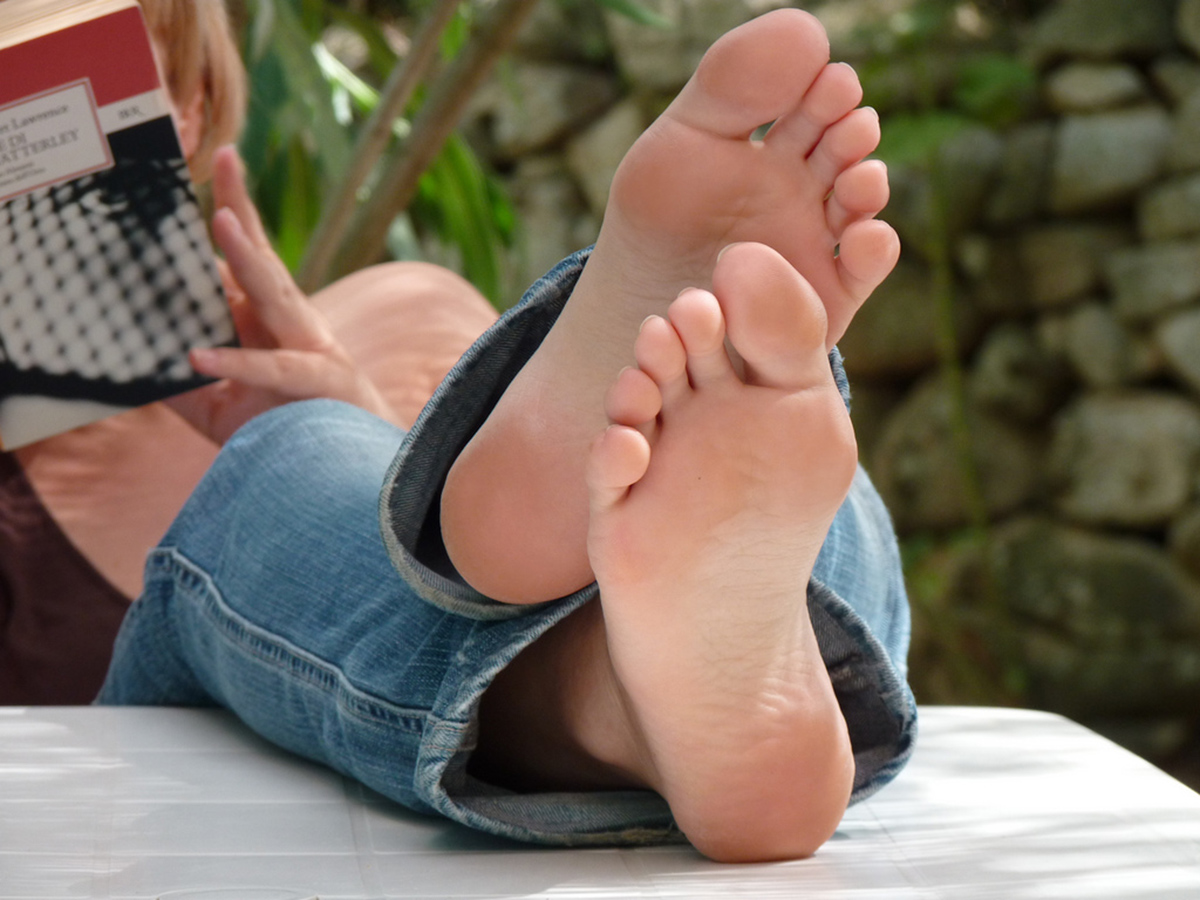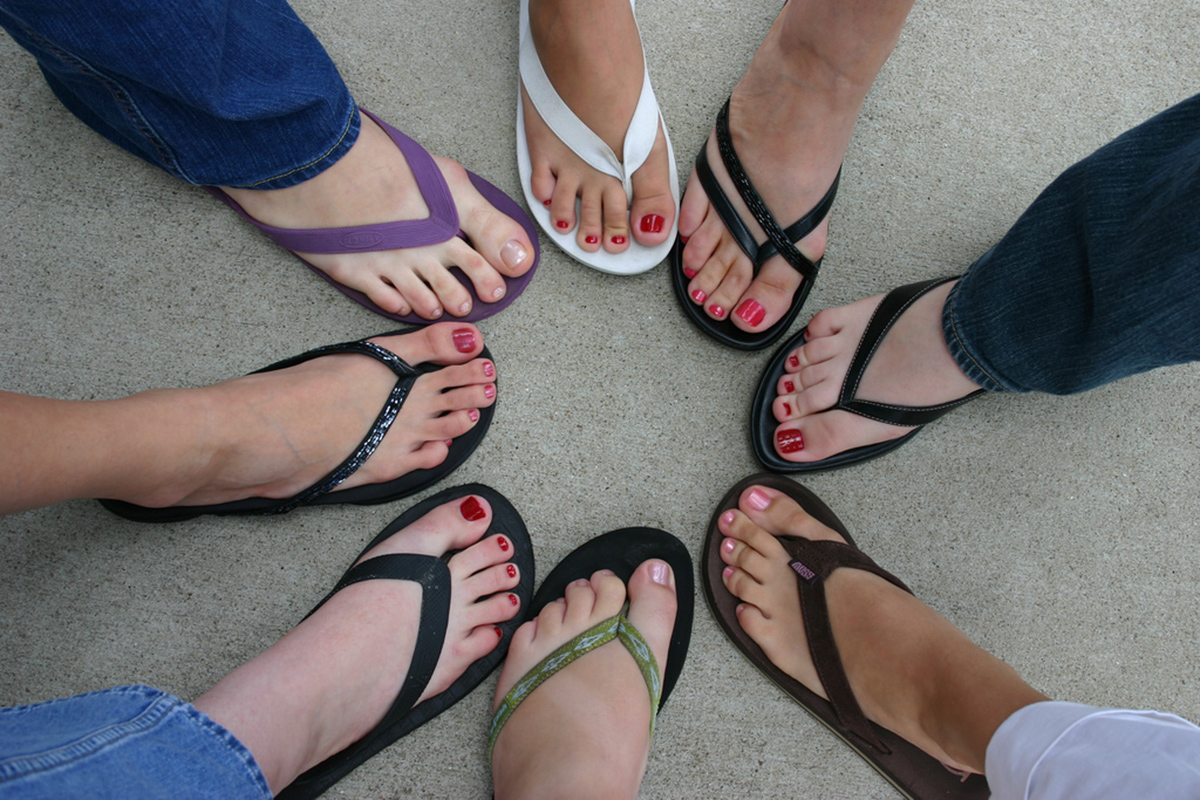The Renaissance Of Arch Support and Specialized Insoles
A few of this site's older members might remember just how rare specialized insoles for your shoes once were. Whether they were built directly into the shoe or sold as an added instrument that you could slot into whatever pair of shoes you were wearing, orthotic insoles were not always as commonplace as they are today.
Now though, you just have to take a trip to the nearest sports equipment or shoe store to purchase a pair of these custom designed shoe inserts. You'll now also find most of these stores equipped with pressure pads for your feet, some computer monitors and maybe even a treadmill to test your gait (another word for walking style) to find your 'foot type' and prescribe an insole accordingly. But where did this resurgence of interest in orthotics come from? Better question yet, where did they originate and why were they being sold in the first place?

A Quick History Of Orthotics
Specialized insoles for shoes actually date back further than you might think. In fact, when researching this topic, it's surprising how much history and controversy is behind these simple footwear items. You see, early in the 20th century an orthopedist called Royal Whitman believed that both the shape of the foot and how someone walked was related to muscle action and designed the first 'orthotic insole’, which is a nice way to describe his invention of a metal brace with a large metal bump on the inside for 'arch support’. While few people used the device, due to the pain it caused, it was the start of the concept of treating someone's biomechanical (a fancy term for human movement) issues. This concept was then tweaked by a Dr. Scholl. Yeah, that Dr. Scholl. He basically reinvented the brace to make it more lightweight, adaptable to many different shoes and, most importantly, more comfortable.
From there, the manufacturing and marketing of orthotic insoles and 'corrective’ shoes exploded. These relatively new products were marketed to be able to treat a wide range of problems and ailments. It actually got so bad that, in the 1940s, the Federal Trade Commission in the USA issued a cease-and-desist order to many companies over the excessive and false claims of what their shoes could do.
READ Running Shoes: The Ones that Fit Are Better than the Expensive Ones
However, as these devices got lighter and cheaper to manufacture, their growth in the market continued right up to the present day. Now, they're even being franchised to third-party companies, like the shoe stores mentioned above.
Savior Or Sham?
So, now that we're all caught up on the history of orthotics, the most logical question to come next is ‘do they work?’
The best way to answer this is to look at what these specialist shoes or insoles claim to help, and how.
In an industry like this, with diverse products and a large difference in the marketing of these products, there will always be variations in claims for selling each individual shoe or insole, so, in this article, we’ll deal with the most common claim used.
Body Alignment: From the Ground Up
The posture debate. This, like the insoles themselves, is also seeing a renaissance in recent years, with Functional Movement Screens being used in sports, exercise professionals implementing weird and wonderful corrective exercises, and now, the show companies, particularly the sport shoe companies, are getting in on the act.
So, basically, many companies make the claim that each individual has a different foot structure, mainly the structure of the arch in their foot. They can have high arches, low arches, or 'collapsed’ arches, where the feet are quite flat in structure. They then claim that this foot structure causes the foot to roll inwards, a movement known as inversion (not pronation, as it's commonly called), or roll outwards, known as eversion (not supination). This movement is then claimed to either directly cause ankle pain and injuries by placing stress on the ankle joint or foot or indirectly cause pain and injuries through the body compensating for the ankle inversion or eversion by moving the knee or hip joint to accommodate the ankle.

So, firstly, addressing the idea that the ankle, hip and knee joint move in response to, or along with, the ankle; It does. Of course if does. Otherwise we would run the risk of tearing tendons and ligaments at every imperfect step. The knees and hips act like springs and shocks absorption, buckling under pressure during trips, slips and falls or simple missteps, lessening the pressure on the foot alone. So, yes the movement of the hips and knees is substantially related to, or dependent on, the movement of the ankle. However, the real question that should be asked is, if our foot inverts or everts, does this increase our chance of injury or pain?
The answer seems to be no. In fact two studies assessing the injury prevalence of those wearing specialized, specific insoles found no significant impact in injury rate. While there was a significant difference in one of the studies in 'high pronators’ (people who have extreme pronation in their feet) seem to only make up about 1% of the population, so it's highly unlikely that the majority of the people wearing the insoles need them for injury prevention.
READ Spring Shoes: Help Your Feet Feel Better
But what about the pressure on Achilles tendon? The one the salesman told me about?
Well, turns out the Achilles tendon is pretty tough and can take a bit of pressure. Plus, even if you do get new insoles, there's no guarantee that it's going to align the force that travels up through your heel in a straight line. This is due to the fact that your body seems to have a ‘preferred movement pattern’ that it will do its best to stick to no matter what footwear you use. So putting insoles in your shoes can have a pretty random and sporadic effect on how the forces in your foot travel and your movement. Whether this is good or bad, is still unknown.
There may be something beneficial to wearing these specialist insoles or shoes beyond the placebo effect (the name given to an effect that is caused purely from the belief that something should work). There may also be a way to get the claimed benefits of the specialized shoes or the insoles without having to actually spend more money to get them.
Staying In Your Comfort Zone: How Your Shoe Choice May Affect Performance
There have been studies showing that more comfortable shoes not only help reduce injury but also allow you to utilize more of your muscles in both the ankle’s surrounding musculature, like the calves, and the knee musculature, like the hamstrings and quadriceps. So, the magic behind this resurgence in orthotics may be in the added comfort, through the extra cushioning many of these shoes and insoles offer, of wearing the shoes. Studies have also shown a correlation between shoe comfort and injury and pain reduction. Added shoe comfort can also reduce oxygen consumption during running, allowing you to increase your speed without running out of steam.
READ Summer Shoes: Flip-Flops Aren't That Easy on the Feet
So, you may be able to increase your performance in training and competition by simply picking the most comfortable shoe for you. Also, there may be some merit in choosing shoes that don't disturb your preferred movement path. But, unfortunately, to get an accurate estimate of that, you would need around four to six cameras taking frame by frame images of your foot while walking and running and you would have to design a shoe from scratch and even then there's no guarantee it would work.
Conclusions And Recommendations
Don't spend too much time worrying about how your ankle is moving, and how this is affecting your knees, hips and overall posture, and instead just go for the most comfortable shoe for you. If you do pick up an injury, from running or other activities, there's a long list of potential reasons for it before you should consider the shoes you're wearing. However, if your shoes are causing little niggles or discomfort or pain, you should probably consider switching footwear.
- 1. Jaffe, Adam B. (2007) Innovation and Its Discontents: How Our Broken Patent System is Endangering Innovation and Progress, and What to Do About It
- 2. Kinchington, M. A., Ball, K. A., & Naughton, G. (2011). Effects of footwear on comfort and injury in professional rugby league. Journal of sports sciences, 29(13), 1407-1415.
- 3. Luo, G., Stergiou, P., Worobets, J., Nigg, B., & Stefanyshyn, D. (2009). Improved footwear comfort reduces oxygen consumption during running. Footwear Science, 1(1), 25-29.
- 4. Mattila, V. M., Sillanpää, P. J., Salo, T., Laine, H. J., Mäenpää, H., & Pihlajamäki, H. (2011). Can orthotic insoles prevent lower limb overuse injuries? A randomized‐controlled trial of 228 subjects. Scandinavian journal of medicine & science in sports, 21(6), 804-808.
- 5. Miller, J. E., Nigg, B. M., Liu, W., Stefanyshyn, D. J., & Nurse, M. A. (2000). Influence of foot, leg and shoe characteristics on subjective comfort. Foot & Ankle International, 21(9), 759-767.
- 6. Murley, G. S., & Bird, A. R. (2006). The effect of three levels of foot orthotic wedging on the surface electromyographic activity of selected lower limb muscles during gait. Clinical Biomechanics, 21(10), 1074-1080.
- 7. Ndermann, A. M., Nigg, B. M., Humble, R. N., & Stefanyshyn, D. J. (2003). Orthotic comfort is related to kinematics, kinetics, and EMG in recreational runners. Medicine & science in sports & exercise, 195(9131/03), 3510-1710.
- 8. Nigg, B. M. (2001). The role of impact forces and foot pronation: a new paradigm. Clinical journal of sport medicine, 11(1), 2-9.
- 9. Nigg, B. M., Baltich, J., Hoerzer, S., & Enders, H. (2015). Running shoes and running injuries: mythbusting and a proposal for two new paradigms:‘preferred movement path’and ‘comfort filter’. British journal of sports medicine, bjsports-2015.
- 10. Starrett, C. J. (1994). Historical review and current use of the Whitman/Robert's orthoses in biomechanical therapy. Clinics in podiatric medicine and surgery, 11(2), 231-239.
- Photo courtesy of sole lover: www.flickr.com/photos/26514616@N04/8057728894/
- Photo courtesy of genvessel: www.flickr.com/photos/genvessel/119944073/
- Photo courtesy of sole lover: www.flickr.com/photos/26514616@N04/8057728894/

